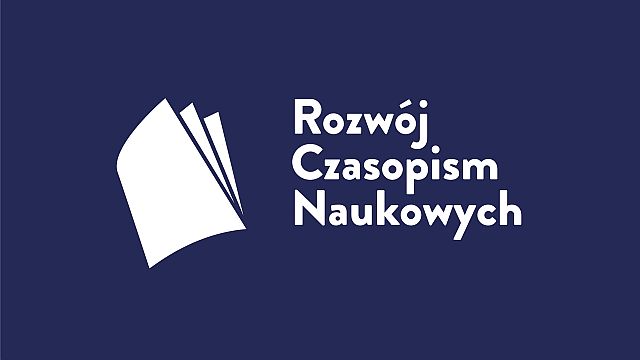Restytucja dóbr kultury utraconych przez Chińską Republikę Ludową na przykładzie odzyskiwania brązowych głów zwierząt z Yuanming Yuan
Abstrakt
Restitution of cultural goods is a very complicated issue in practice, encountering many problems on its way. Most international conventions, including the 1970 UNESCO Convention and the 1995 UNIDROIT Convention, provide for non-retroactivity of their provisions and a limited time to bring claims for reimbursement. Another problem is the still low number of ratifications of both conventions, especially the one from 1995. Also, the national legislation of many countries still does not contain regulations in this area and appropriate restitution instruments.
Once the Chinese government realized the value of its cultural heritage treasures as a source of national and political identity, it began the process of restoring looted cultural assets. This is not an easy task, because a large part of the objects was stolen a long time ago, which directly prevents the application of international legal regimes resulting from conventions on the return of stolen or illegally exported goods.
The case of bronze statues from the Yuanming Yuan shows another way to recover looted cultural goods. It is based primarily on the national identity of Chinese society, which treats looted artifacts as an important element of their history and culture. Thanks to private collectors and entrepreneurs who had bought such objects and then donated them to Chinese museums and institutions, it was possible to regain many of the lost cultural goods.
The aim of article is to provide a general overview of the People’s Republic of China’s restitution policy, its methods and effects, using the example of the recovery of Chinese bronze heads stolen from Yuanming Yuan.
Downloads
Bibliografia
Beeching J., The Chinese Opium Wars, New York 1976.
Changhong Y., Xia L., A Review of Japan’s Cultural Agression against China during Anti-Japanese War, „Journal of South-Central University for Nationalities” 2005, no. 4.
Ford P., China protests Christie’s auction in Paris of relics, „The Christian Science Monitor”, 20.02.2009.
French Court Throws out Appeal over Yves Saint Laurent Chinese Bronzes as Christie’s Sale Begins, „The Telegraph”, 29.02.2009.
Gerecka-Żołyńska A., Restytucja dóbr kultury a wolny rynek sztuki, „Ruch Prawniczy, Ekonomiczny i Socjologiczny” 1996, z. 2.
Hevia J.L., Looting and Its Discontents: Moral Discourse and the Plunder of Beijiing, 1900–1901 [w:] The Boxers, China, and the World, eds. R. Bickers, R.G. Tiedemann, Lanham 2007.
Hugo V., The Sack of the Summer Palace, List do Kapitana Butlera z 25 listopada 1861 r., https://www.napoleon.org/en/history-of-the-two-empires/articles/the-chinese-expedition-victorhugo-on-the-sack-of-the-summer-palace/ (dostęp: 11.12.2020).
Kaufman A.A., The «Century of Humiliation,” Then and Now: Chinese Perceptions of the International Order, „Pacific Focus. Inha Journal of International Studies” 2010, vol. 25, no. 1.
Konstytucja Chińskiej Republiki Ludowej, przekład z jęz. chińskiego W. Lan, M. Dargas, Gdańsk 2012.
Kowalski W., Droga do Konwencji UNIDROIT z 1995 roku oraz jej podstawowe rozwiązania, „Santander Art and Culture Law Review” 2015, nr 1.
Kowalski W., Konwencja UNIDROIT o skradzionych lub nielegalnie wywiezionych dobrach kultury, „Studia i Materiały” 1996, nr 102.
Kuryłowicz M., Słownik terminów, zwrotów i sentencji prawniczych łacińskich oraz pochodzenia łacińskiego, Kraków 2001.
Lo Shiu Hing S., OPINION – The Return of Bronze Horse Head to the Old Summer Palace, „MNA Macau Opinion”, 5.12.2020.
Liu Z., Repatriation of Cultural Objects: The Case of China, Uniwersytet w Amsterdamie 2015.
Liu Z., The Case for Repatriating China’s Cultural Objects, New York 2016.
Magramo K., Bronze horse head, donated by late Stanley Ho, becomes first of zodiac collection returned to Beijing’s Old Summer Palace after theft in 1860s, „South China Morning Post”, 1.12.2020.
O’Keefe P.J., Commentary on the UNESCO 1970 Convention on Illicit Traffic, Institute of Art and Law, Leicester 2000.
Pearce N., From the Summer Palace 1860: Provenance and Politics [w:] Collecting and Displaying China’s “Summer Palace” in the West: The Yuanmingyuan in Britain and France, ed. L. Tythacott, New York –London 2018.
Peng L., A Research on Legal History of Return of Relics, Nanjing 2012.
Prott L.V., Commentary on the Unidroit Convention on Stolen and Illegalny Exportem Cultural Objects 1995, Institute of Art and Law, Leicester 1997.
Prott L.V., Strenghts and Weaknesses of the 1970 Convention: An Evaluation 40 years after its adoption, Background paper for participants in the meeting „The fight against the illicit trafficking of cultural objects. The 1970 convention: past and future” Paris, UNESCO Headquarters, 15– 16 marca 2011, s. 3–5, www.unesco.org/new/fileadmin/MULTIMEDIA/FIELD/Brussels/pdf/strengths%20and%20weaknesses%20of%20the1970%20convention.pdf (dostęp: 10.12.2020).
Siu V., Castiglione and the Yuanming Yuan Collections, „Orientations” 1988, vol. 19, no. 11.
Stamatoudi I., Cultural Property Law and Restitution: A commentary do International Conventions and European Union Law, Cheltenham 2001.
Wakeman F.E., Jr., The Canton Trade and the Opium War [w:] The Cambridge History of China, vol. 10, Late Ch’ing 1800–1911, Part I, ed. J.K. Fairbank, Cambridge 1978.
Wang H., Perkins J. (eds.), Hand book to the Collections of Sir Aurel Stein in the UK, London 2008.
Wong G., China punishes Christie’s for auction of relics, „Taiwan News”, 27.02.2009.
Xiuquing Y., Dunhuang Sees Great Changes over the Years: Mogao Grottoes Through the Hard Times, Beijing 2006.
Yongzeng L., Discovery of Library Cave in Dunhuang Magao Caves and Running of the Historical Cultural Relics, „Dunhuang Research” 2000, no. 2.
Zalasińska K., Przeciwdziałanie nielegalnemu przywozowi, wywozowi i przenoszeniu własności dóbr kultury – wybrane uwagi w związku z wdrożeniem Konwencji UNESCO z 1970 r. w Polsce, „Santander Art and Culture Law Review” 2015, nr 1.
Zamęcki Ł., Znaczenie zasady „jedno państwo – dwa systemy” dla utrzymania stabilności relacji Chińska Republika Ludowa – Hongkong, „Wrocławskie Studia Politologiczne” 2014, nr 16.
Zeidler K., Restittuion of Cultural Property: Hard Case – Theory of Argumentation – Philosophy of Law, Gdańsk – Warszawa 2016.
Zeidler K., Restytucja dóbr kultury ze stanowiska filozofii prawa, Warszawa 2011.
Zhong H.S., The Return of Chinese Cultural Treasures Taken From the Second Opium War (1856–1860), „International Proceedings of Economics Development and Research” 2014, no. 71(7).
Zicheng Z., A Memorandum of A Century’s Loss of Cultural Relics in China, Beijing 2001.

 Uniwersyteckie Czasopisma Naukowe
Uniwersyteckie Czasopisma Naukowe





